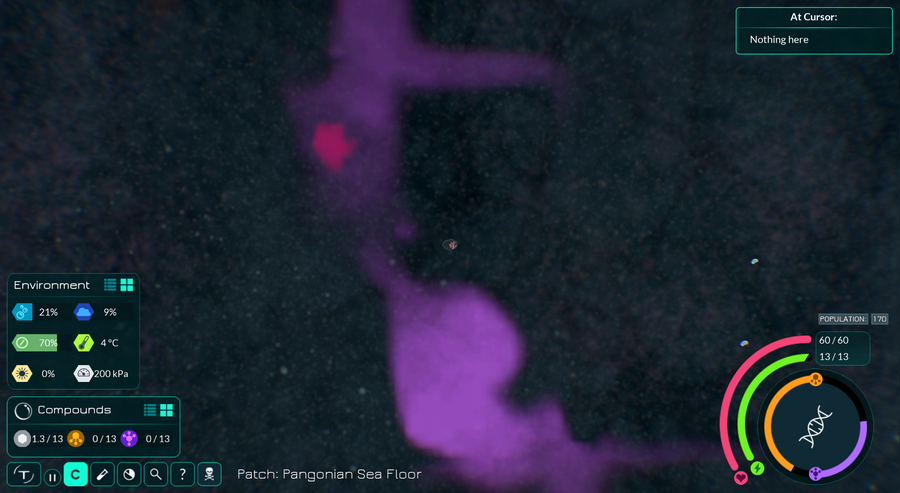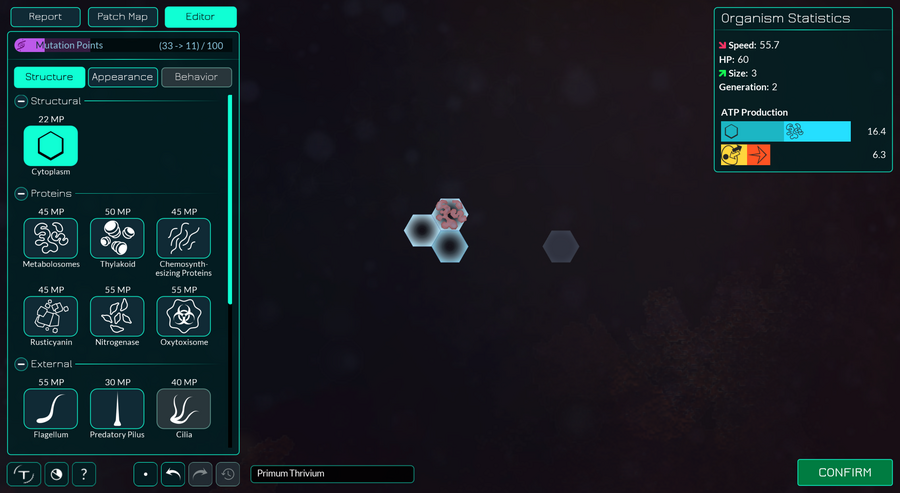This is the code repository for Thrive. For more information, visit Revolutionary Games' Website.
Repository structure:
- assets: This folder contains all the assets such as models and other binaries. The big files in this folder use Git LFS in order to keep this repository from bloating. You need to have Git LFS installed to get the files. Some better editable versions of the assets are stored in a separate repository.
- doc: Documentation files. Contains style guide, engine overview and other useful documentation.
- simulation_parameters: Contains JSON files as well as C# constants for tweaking the game.
- scripts: Utility scripts for Thrive development
- src: The core of the game written in C# as well as Godot scenes.
- test: Contains tests that will ensure that core parts work correctly. These don't currently exist for the Godot version.
Depending on what you want to contribute, you need to take different steps to get your development environment set up.
Read the contribution guidelines and code of conduct first. If you need help please ask on our forums.
There are also other useful documents in the doc folder not mentioned here.
If you have game development skills, you can apply to the team here.
If you'd like to translate the game to your language, you can find the relevant information here.
The planning board contains all issues and pull requests grouped by their priority and status. It can be found here.
Thrive is written in C#. In order to work on the C# you need to compile Thrive yourself.
You can find instructions for how to do that in the setup instructions. And
if you've never used Godot before please read learning Godot. This repository
also contains a few helper scripts written in C# for working on the game. These can be ran
with dotnet: dotnet run --project Scripts -- help
Be sure to have a look at the styleguide, both for guidelines on code formatting and git usage.
Binary files should be committed using Git LFS.
To work on the art assets you will want to install Godot and work on the project files with it. Instructions for that are the same as for programmers: setup instructions. And if you've never used Godot before please read learning Godot.
Alternatively some art assets can be worked on without having a working copy of the Godot project, but then you need to rely on other artists or programmers to put your assets in the game.
You should familiarize yourself with the Godot Asset pipeline.
To contribute assets you can contact a developer and provide that person with your assets and the developer can add the assets to the official repository. It will at a later time be possible to commit to Git LFS server yourself, currently it is limited to only Thrive developers. Note that you must have Git LFS installed for this to work. Any artists on the team should preferrably modify the project in Godot themselves and commit the assets using Git LFS.
Extra note for modellers: There are extra instructions for how to import models here: import tool
The history for this repository has been slightly cleaned up to remove large old binary files that were added before we used Git LFS. The original history can be found here: original_master








